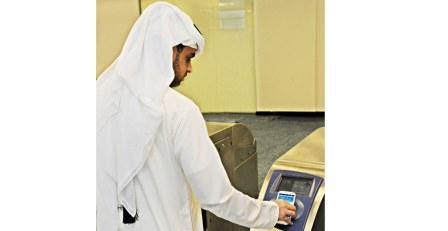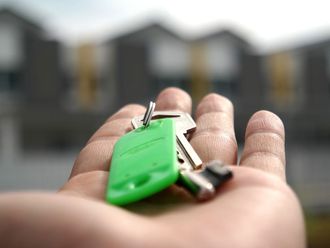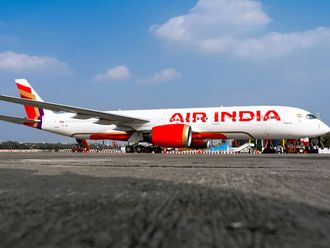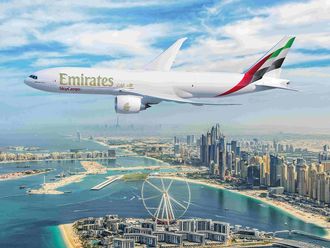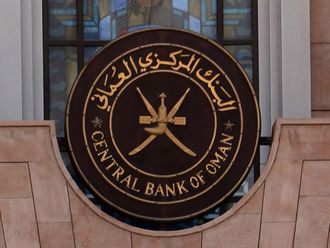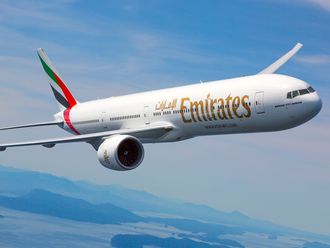Walk into a coffee shop, pharmacy or dry-cleaners in the UAE and chances are you could actually pay by tapping your mobile phone on the point of sale terminal, instead of swiping a card. Aaron Oliver, Head of Emerging Payments, Middle East and Africa, MasterCard, tells GN Focus that he has been using contactless payments in the UAE for a while now.
“I use it all the time. There are a lot of contactless merchants in the market. Next year, you will see it becoming much more visible in the UAE. In reality, it is only a function of the market coming together to tell people about it [contactless technology]. The future is already out here — it is just not well distributed,” says Oliver.
In the UAE, consumer demand for the latest is matched by the keenness of financial institutions to make this technology popular. One solution allows users to convert any phone into a transaction device. An early entrant in the market, Mashreq, which has a sticker card for payments using nearfield communication (NFC), lists hundreds of merchants in the UAE, including Boots and Bin Sina pharmacies, Starbucks and Caribou coffee shops, Geant and Al Adil supermarkets in locations as varied as Fujairah, Al Ain and Dubai.
Nimish Dwivedi, Head of Payments, Mashreq, tells GN Focus, “Tap n Go stickers are chosen by more than one in every three customers applying for any MasterCard product.”
According to the bank, the sticker is accepted at more than 4,000 outlets and converts any mobile phone of any generation into a credit card that can then be used to make contactless payments at thousands of retail outlets in the UAE and abroad. Purchases of less than Dh100 require no signature. “The most popular transaction segments are where customers want to pay quickly and where the transaction value is typically
smaller. Besides cinema tickets, coffee and groceries are prime examples where customers choose to simply Tap n Go. The UAE is one of the leading markets in terms of adopting the system,” says Dwivedi.
Cards on the phone
Such is the popularity of contactless solution that Mashreq has recently launched a cobranded
cinema card with the Tap n Go tagline, which allows customers to tap and purchase their cinema tickets and also beat the queue at food and beverage counters within Novo cinema halls.
Oliver says that many other banks are actively exploring the mobile payments space.While the form may be different across banks — a sticker, a wrist-band or an app — the idea is to use a mobile device for payments. MasterCard is getting ready to deliver its MasterPass digital wallet later this year in the
UAE. It will allow consumers to feed in details of multiple credit cards in the mobile. While shopping, the user can then pay with any of the cards stored digitally.
Internationally, the product is already in use and popular. “Consumers put their card credentials in that wallet and they can use it globally. Today 40,000 merchants already accept it, such as Singapore Airlines and American Airlines. All you need is the internet,” says Oliver. “In the UAE, we are not launching a mobile app. The banks that we are launching it with will allow the consumer to access that wallet online,
through their mobile.”
There are various ways in which consumers can make mobile payments. Most smartphones — including Apple, most recently — are NFCenabled. In addition, internet giants such as Google and Amazon have also entered this space. With iPhone6, Apple Pay uses NFC technology to transmit a radio signal between the iPhone or Apple Watch and a receiver.
Put your finger on it
Users need to touch the device’s home button, which has a fingerprint sensor to verify identity. However, while Apple Pay supports credit and debit cards from Visa, MasterCard and American Express, currently it is only available on USissued cards. If the consumer does have it enabled from a US-based issuer, the device will work at merchant terminals in the UAE.
According to the Global Payments, 2020: Transformation and Convergence report, issued by investment services company BNY Mellon, “By 2020, consumer experience and expectations — and the role of technology in meeting these expectations — will account for perhaps 70 per cent of what shapes the evolution of payments, with the needs and expectations of commercial and corporate customers supplying the remaining 30 per cent. Smartphone and tablet technologies — with their rich functional capabilities upported by increasingly sophisticated applications, capable of enabling complex transactions in a relatively secure technical environment — will be criticalto this shift in influence.”
The growth of m-commerce is providing another push formobile payments. Laurent Wakim, Regional Manager — Mena, PayPal, told GN Focus in an interview earlier this year, “m-Commerce is growing exponentially on mobile globally and across the Mena region. Smartphone penetration here is at an all-time high. At the moment, m-commerce makes up around 10 per cent of all online shopping transactions in the region, and we predict that to double by 2015.”
MasterPass is relying on online shoppers to be its first users. Oliver says, “Master- Pass will be primarily for ecommerce transactions, but moving forward, our digital enabling service can be utilised for all kinds of payment types that customers want to use. All the merchants have to do is prepare their website with a MasterPass button.”


